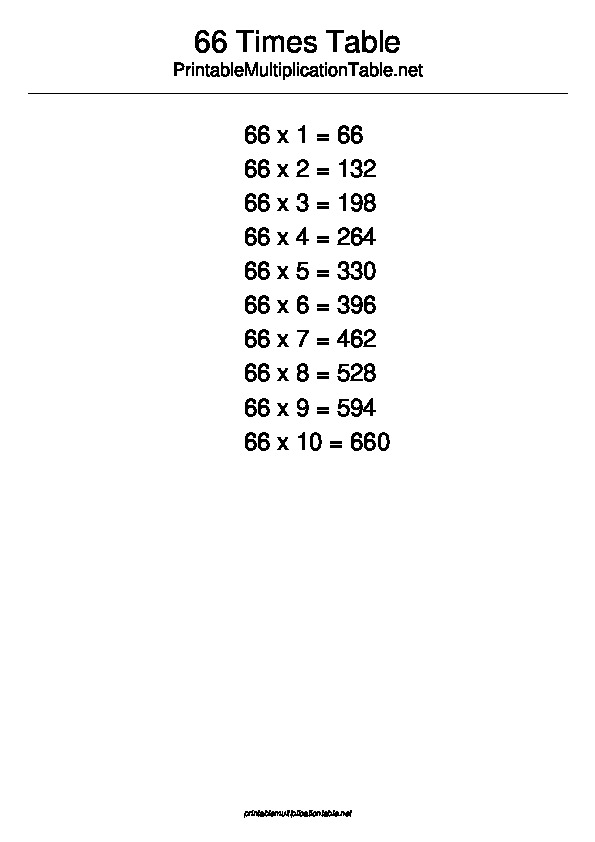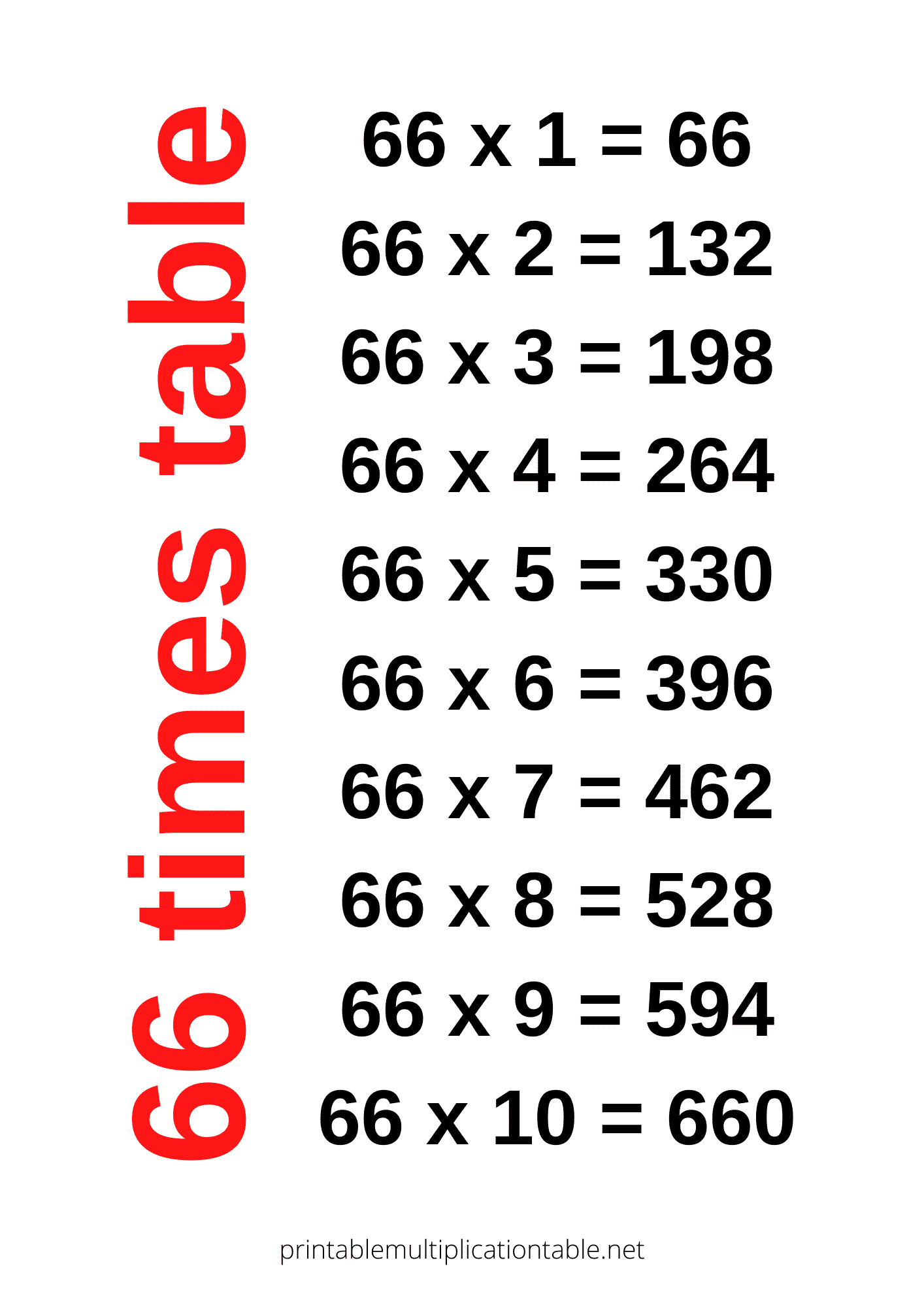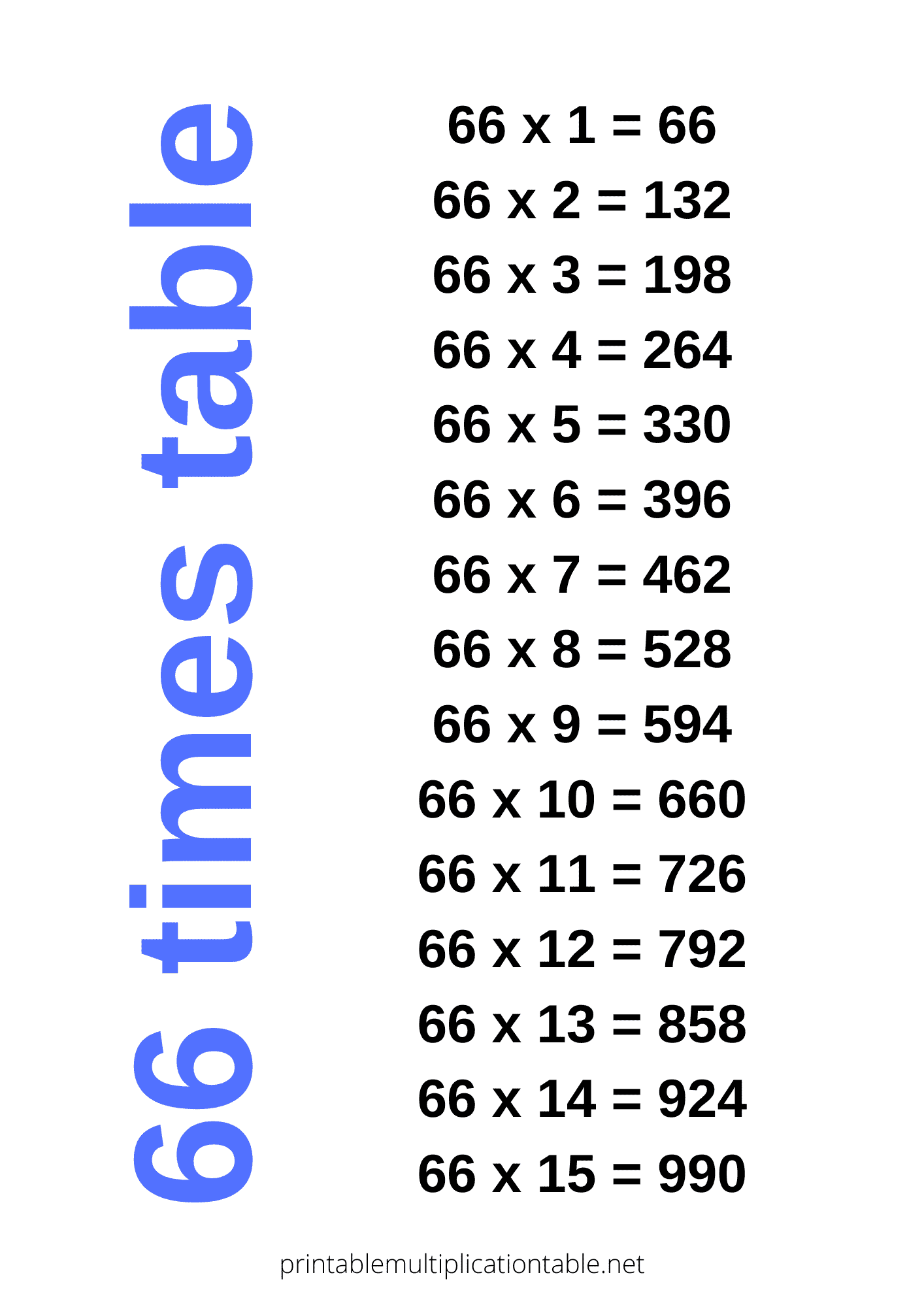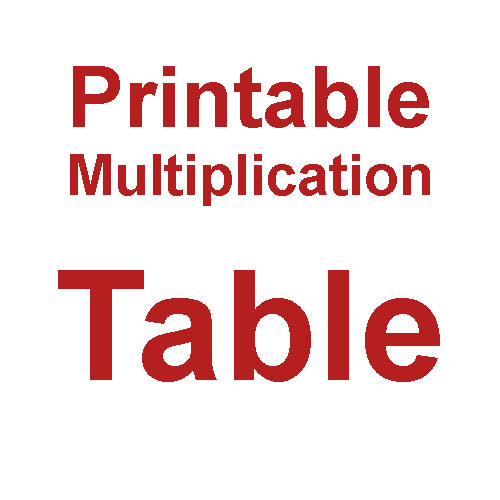66 Times Table
Hey there, math enthusiasts! Get ready to embark on an exhilarating mathematical journey as we dive into the marvelous world of the 66 times table.
As your math teacher and partner in this adventure, I assure you that this multiplication voyage will be filled with excitement, discovery, and a whole lot of fun! So, buckle up and let's explore the captivating universe of the 66 times table!
Setting the Stage
Before we jump right in, let's start by understanding the fundamentals. The 66 times table involves multiplying numbers by 66.
Now, you might be thinking, "Whoa, that sounds challenging!" But don't worry, we'll break it down step by step, and you'll see just how fascinating and approachable it can be.
Let's Begin
To kickstart our exploration, let's take a closer look at the 66 times table using smaller numbers. By doing so, we'll build a solid foundation before tackling larger calculations. Let's dive in and examine the table up to 10:
- 1 x 66 = 66
- 2 x 66 = 132
- 3 x 66 = 198
- 4 x 66 = 264
- 5 x 66 = 330
- 6 x 66 = 396
- 7 x 66 = 462
- 8 x 66 = 528
- 9 x 66 = 594
- 10 x 66 = 660
Spotting the Patterns
Patterns are like hidden treasures waiting to be discovered in the world of multiplication tables.
In the 66 times table, we can uncover some interesting patterns that will make our journey even more enjoyable.
Pattern 1: Double Trouble!
As we observe the products in the 66 times table, we notice a doubling pattern. Each subsequent product is obtained by doubling the previous one.
For instance, 66, 132, 264, 528, and so on. This doubling pattern continues throughout the table, making it easier for us to find the products quickly.
Pattern 2: The Zeros at the End
When we multiply any number ending in zero by 66, the resulting product will have the same digits in the units and tens places, followed by two zeros.
For example, 30 x 66 = 1980 (30 at the beginning, zero at the end). This pattern remains consistent across the entire table, simplifying calculations involving numbers that end in zero.
Putting It All Together
Now that we've unraveled the patterns and structure of the 66 times table, it's time to put our knowledge into action.
By recognizing the doubling pattern and the rule for numbers ending in zero, you'll become more confident and proficient in multiplying numbers by 66.
Sixty-six Multiplication Table
Read, Repeat and Learn Sixty-six times table and Check yourself by giving a test below

Also check times table 61 times table 62 times table 63 times table 64 times table 65 times table 66 times table 67 times table 68 times table 69 times table 70 times table
66 Times Table Chart

Table of 66

66 Times table Test
Multiplication of 66
Reverse Multiplication of 66
Shuffled Multiplication of 66
How much is 66 multiplied by other numbers?
